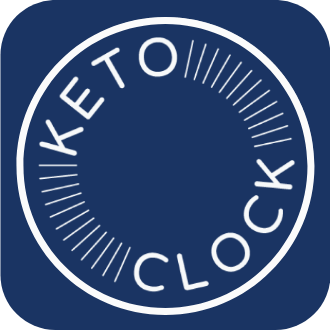How to Calculate Your Keto Macros: A Step-by-Step Guide
- KetoClock
- Feb 17
- 3 min read
The ketogenic diet, or "keto" for short, is a popular low-carb, high-fat eating plan that has gained traction for its potential weight loss and health benefits. But unlike some diets where you simply restrict certain food groups, keto requires careful attention to your "macros" – the macronutrients that make up your daily calorie intake.
This guide will walk you through how to calculate your keto macros, empowering you to take control of your diet and achieve your goals.
What are Keto Macros?
Macronutrients are the three main components of food that provide your body with energy:
Protein: Essential for building and repairing tissues, producing enzymes and hormones.
Carbohydrates: The body's primary source of energy. On keto, carbs are drastically reduced.
Fat: The primary energy source on a keto diet. Fat also supports hormone production and nutrient absorption.
The key to keto is achieving the right balance of these macros to shift your body into a metabolic state called "ketosis." In ketosis, your body becomes a fat-burning machine, utilizing fat for energy instead of glucose from carbohydrates.
Why Calculate Your Keto Macros?
Calculating your keto macros is crucial for several reasons:
Achieving Ketosis: Precise macro ratios are essential for entering and maintaining ketosis. Too many carbs can kick you out of ketosis, while too much protein can be converted to glucose, hindering your progress.
Personalized Nutrition: Macro calculations consider your individual factors like age, activity level, and goals, ensuring your diet is tailored to your needs.
Optimal Results: Whether your goal is weight loss, improved energy levels, or better blood sugar control, calculating your macros helps you optimize your keto journey.
Ketosis: What It Is and How to Achieve It
The human body is a remarkable machine, capable of adapting to various fuel sources to sustain its energy needs. While glucose derived from carbohydrates typically serves as our primary energy source, our bodies possess the incredible ability to utilize fat for fuel when necessary.
This metabolic shift, where fat takes center stage as the dominant energy source, is known as ketosis.
Ketosis has garnered significant attention in recent years, largely due to the rising popularity of the ketogenic diet. But what exactly is ketosis, how do you achieve it, and what are its potential benefits and drawbacks? Let's delve deeper into this fascinating metabolic state.
Understanding Ketosis: A Metabolic Shift
In a typical diet, carbohydrates are broken down into glucose, which enters the bloodstream and provides energy for our cells. However, when carbohydrate intake is significantly reduced, the body begins searching for alternative fuel sources. This is where ketosis comes into play.
When glucose is scarce, the liver steps up and starts breaking down stored fat into molecules called ketones. These ketones, specifically acetoacetate, beta-hydroxybutyrate, and acetone, become the primary energy source for the body, including the brain. This metabolic state is characterized by elevated levels of ketones in the blood, a telltale sign that your body has shifted its fuel preference.
Discover real time metabolic science in an app
KetoClock is an app that provides personalized predictions of how long it will take you to reach maximum fat burn and insights into how your body uses and stores energy based on your daily activities, helping you to create healthy habits, lose weight, and feel great! Tracking your food is quick and easy, helps you stay on track, and allows us to estimate your metabolic state. Simply snap a barcode, search the database of nearly 1 million foods for a specific item, or add an entire list of foods at once using standard or spoken text (dictation).
Try it today.




Comments